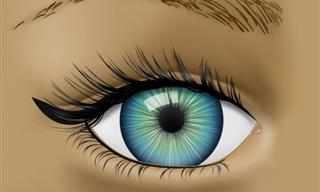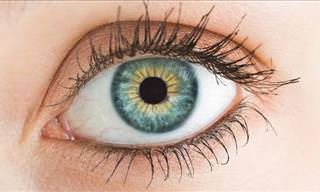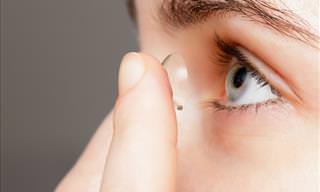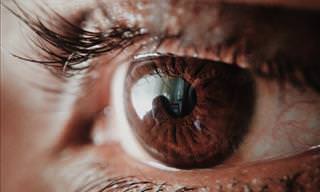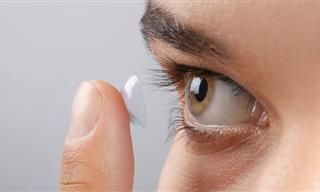Around three months ago, a young lady from Texas, Amy, visited an optometrist to get her newly bought contact lenses fitted with no clue of what was to come. This is a common task performed by many lens users. After using them for a few days, she started to feel immense pain in her left eye. At first, she thought it might be dirt that got in. However, as the pain persisted, she was referred to the hospital where it was identified that she had a corneal abscess. An infection had caused a purulent ulcer in the transparent corneal tissue that may result in long-term visual impairment and permanent scarring.
Even though the patient was provided with the necessary care, due to an underlying fungal infection in her eye, she had to undergo a corneal transplant. The medicines meant to prevent the fungus from spreading in the cornea were ineffective, and the doctors had to remove it. This case is quite rare, but it is not the only one: contact lenses bring a great deal of beauty and comfort, but they can also cause a range of problems that can negatively affect the wearer's quality of life. So, what are the usual hazards associated with contact lenses?
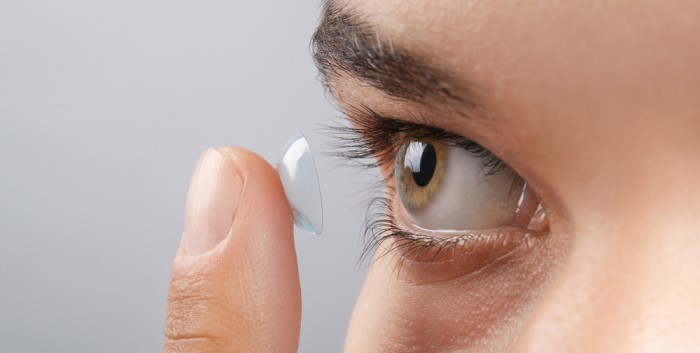
To fully comprehend the danger to the eye posed by contact lenses, one must first know what a cornea is. The cornea is a transparent dome-shaped tissue that envelops the front part of the eye and partners with the eye’s lens (which is likewise transparent) in the process of refraction. Damage to the transparent corneal tissue, which will appear as cloudiness of the cornea, will cause the light beams that are transmitted to the retina to be distorted. This will result in a blurred image. Additionally, any harm to the symmetrical structure of the cornea will cause vision damage.
Dr. David Sorkin, who studies the cornea, emphasizes the potential danger of corneal abscesses - a type of infection that commonly occurs with the insertion of a foreign body or contact lenses. He explains that this infection is often caused by the inappropriate use of disposable lenses or sleeping with lenses in, leading to redness and blurred vision. If the abscess is left untreated or does not respond to medications, it may create permanent scarring in the transparent corneal tissue, clouding it and damaging its structure. This may result in impaired vision. Furthermore, the amoebae can attach to the front surface of the lens.
Peter Stils from Chicago also used to wear contact lenses. A few months ago, he was referred to a hospital where he was diagnosed with a severe corneal infection caused by a parasite, an amoeba called Acanthamba. "Due to visual impairment, I used contact lenses regularly. One weekend, I woke up with a red and painful eye. I was referred to the emergency room, where I was diagnosed with a corneal abrasion. I was given an ointment for treatment and an appointment for a follow-up examination after a few days. The condition of the eye did not improve, and an infection called Acanthamoeba was detected during the inspection," he says.
In his case, as in many other cases, the serious infection was caused by a parasite found in water sources. This parasite is resistant to most ingredients in contact lens solutions. "I didn't make sure to wash my hands before taking them out and putting in the lenses," said Daniel, revealing in fact the sensitivity of lenses to infections originating from the palm of the hand.
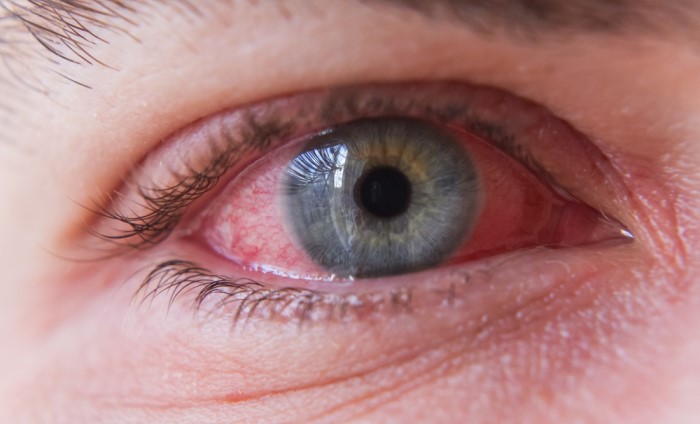
Dr. Roy Daniels, an expert in ocular diseases, emphasizes that multiple examinations affirm a relationship between using tap water and the emergence of Acanthamoeba on rigid contact lenses. He further attests that a plethora of studies also demonstrate that cartridges are a breeding ground for bacteria and microorganisms. The researchers caution that cleaning the cartridge with unclean tap water increases the likelihood of the amoeba attaching to the lens. Eye irritation is a worrying side effect - and this is yet another straightforward example.
Many people who wear contact lenses mistakenly think that using water to clean and prep the lenses is okay. However, this is not a good idea. Even though the water may be safe to drink, it is not sterile and contains microbes. These can be absorbed by the lenses and may cause breaks in the cornea. This can lead to inflammation and infection. Additionally, the lenses can swell as they absorb the water, which may cause them to stick to the eye and cause discomfort. For this reason, it is not recommended to shower or swim with contact lenses. Furthermore, there is a risk that the lenses will be lost in the water. Therefore, it is important not to use water to treat soft contact lenses in any way.
People who wear contact lenses sometimes worry that they will get stuck behind the eye. Fortunately, we're happy to report this is impossible since the conjunctiva (the sclera) and the inside of the eyelids are protected by a thin membrane. However, soft lenses can sometimes fold and become lodged under the upper eyelid, resulting in discomfort and requiring a visit to an optometrist or an ophthalmologist to remove it.
An allergy to contact lenses refers to a sensitivity of the eyelids to the accumulation of proteins and antigens on the surface of the lens so that when you blink, contact is made between the eyelids and the proteins, and an allergic reaction is obtained that makes it difficult or impossible to assemble the lenses. An allergic reaction to contact lenses can manifest itself in watery or red eyes, an itchy feeling, blurred vision, pain, tingling, runny nose, edema, and the like. Reality shows that more than once, an allergic reaction to a certain type of lens occurs.
For example, there are people who are only sensitive to soft lenses or hard lenses. Others are sensitive to lenses only after wearing the same pair for a long time. In the event that an allergic reaction develops, immediately stop using the contact lenses and consult an ophthalmologist or optometrist. Often a certain pause will be required, after which it will be necessary to change the type of lenses or find another solution. In the case of a mild allergy, it may be possible to continue wearing the lenses.
Not just infection, but also filth

It appears that this product only poses a risk to eye health. However, a study revealed that 20 percent of disposable lenses are discarded of improperly, either by being thrown down the sink or toilet and entering a wastewater treatment facility. Even though there are various types of daily lenses, the polymers (plastic molecules) they are composed of are not degraded by the treatments within the facility. As a result, the lenses stay in the emissions of the facility, becoming microplastic pieces that pollute both terrestrial and aquatic habitats.
Up until now, there is no widely-available or successful method of treating wastewater that contains polymers used to make contact lenses. Furthermore, the amount of waste that defective contact lenses produce is much greater than most people realize. Each year, the United States uses 14 billion contact lenses, which yields 20 tons of non-processed plastic and 14 thousand tons of plastic packaging. Plus, the aluminum coating of the packaging is also discarded, corresponding to the same amount as 19 million beverage cans.
 Go to BabaMail
Go to BabaMail



































